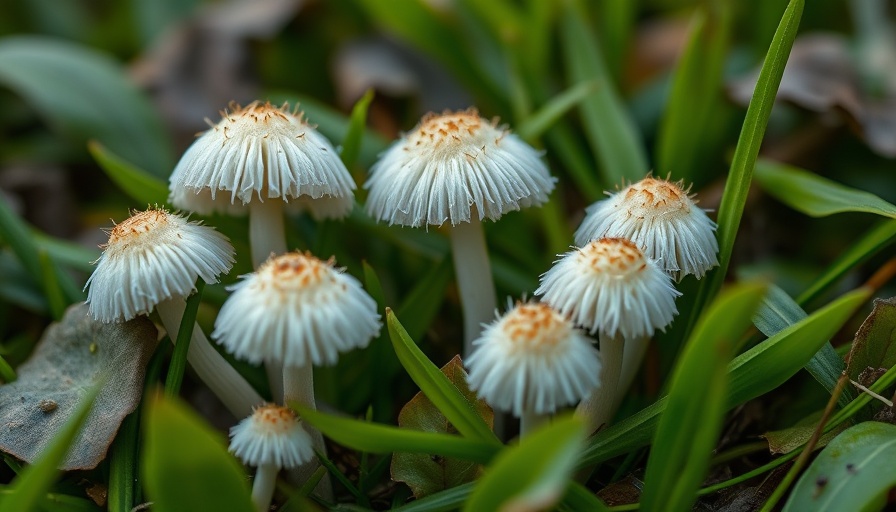
Understanding Lawn Mushrooms: Nature's Indicators
For homeowners, spotting mushrooms sprouting from the grass may bring mixed feelings of curiosity and concern. While many may see them as unsightly invaders, these fungi often indicate a thriving ecosystem beneath the surface. Surprisingly, mushrooms can be a sign of healthy soil, promoting nutrient recycling and supporting local biodiversity!
Myths and Realities of Lawn Mushrooms
One of the main misconceptions about mushrooms in lawns is their potential for harm. Experts like Claudia Bashian-Victoroff and Joyce Corbett emphasize that touching mushrooms is generally safe. However, caution is advised, especially regarding ingestion. To ensure safety, it’s best to admire these natural wonders from a distance unless you’re confident in their identification.
Beneficial Roles of Common Lawn Mushrooms
Let’s take a look at some common types found in our grassy spaces and what they reveal about our soil health:
1. Button Mushroom (Agaricus bisporus): Known for its versatility, this popular edible mushroom thrives in moist conditions and often appears after rainfall, indicating an active nutrient cycle.
2. Parasol Mushroom (Macrolepiota procera): With its broad cap, this edible mushroom typically grows in shaded, moist areas, serving as a reminder of the intricate relationships within the ecosystem.
3. Shaggy Ink Cap (Coprinus comatus): These unique mushrooms transiently grace your lawn, transforming from hat-like forms to a black ink substance within hours. Their short lifecycle showcases the rapid decomposition processes that enrich the soil.
Managing Lawn Mushrooms: Best Practices
If mushrooms become persistent and unwanted, proactive measures can be taken to manage moisture levels and improve lawn health. Aerating your soil, introducing trees or landscaping elements to absorb extra moisture, and composting fallen leaves can effectively reduce conditions favorable for mushroom growth.
Future Predictions: The Role of Fungi in Lawn Health
As we continue to explore sustainable living practices, understanding the role of fungi in lawn ecosystems will become even more crucial. These organisms not only break down organic materials but also play a key role in carbon sequestration, essential for combating climate change.
Ultimately, embracing the presence of mushrooms in your yard can prompt a deeper understanding of soil health and sustainability practices. Instead of viewing these fungi as nuisances, consider them messengers of an ecosystem thriving beneath your feet.
For homeowners looking to strike a balance between lawn aesthetics and ecological health, the key lies in education and understanding. The next time you encounter mushrooms in your grass, remember they can reveal much about the life flourishing in your yard.
 Add Row
Add Row  Add Element
Add Element 


 Add Row
Add Row  Add
Add 

Write A Comment